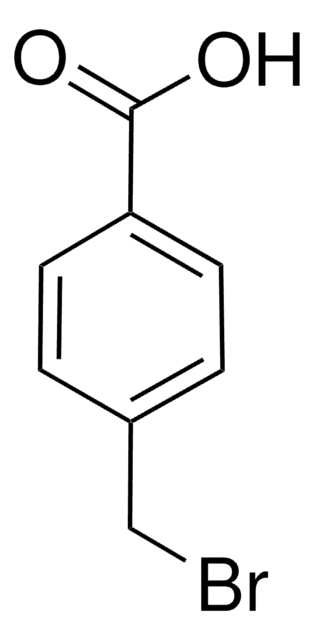693715
Terbium
foil, size 25 mm × 25 mm × 1 mm, 99.9% trace rare earth metals basis
Synonyme(s) :
Terbium-159
About This Item
Produits recommandés
Pureté
99.9% trace rare earth metals basis
Forme
foil
Pertinence de la réaction
reagent type: catalyst
core: terbium
Résistivité
116 μΩ-cm, 20°C
Taille
25 mm × 25 mm × 1 mm
Point d'ébullition
3230 °C (lit.)
Pf
1356 °C (lit.)
Densité
8.234 g/mL at 25 °C (lit.)
Chaîne SMILES
[Tb]
InChI
1S/Tb
Clé InChI
GZCRRIHWUXGPOV-UHFFFAOYSA-N
Vous recherchez des produits similaires ? Visite Guide de comparaison des produits
Application
Code de la classe de stockage
11 - Combustible Solids
Classe de danger pour l'eau (WGK)
WGK 3
Point d'éclair (°F)
Not applicable
Point d'éclair (°C)
Not applicable
Équipement de protection individuelle
Eyeshields, Gloves, type N95 (US)
Faites votre choix parmi les versions les plus récentes :
Certificats d'analyse (COA)
Vous ne trouvez pas la bonne version ?
Si vous avez besoin d'une version particulière, vous pouvez rechercher un certificat spécifique par le numéro de lot.
Déjà en possession de ce produit ?
Retrouvez la documentation relative aux produits que vous avez récemment achetés dans la Bibliothèque de documents.
Articles
A significant limiting factor for wearable electronics and wireless sensors is the finite amount of energy that can be stored in on-board batteries.
The application of magnetism and magnetic materials pervades our modern civilization in the form of electrical power, communications and information storage.
Rechargeable solid-state batteries are becoming increasingly important due to wide-spread use in computers, portable electronics, and vehicular applications.
Notre équipe de scientifiques dispose d'une expérience dans tous les secteurs de la recherche, notamment en sciences de la vie, science des matériaux, synthèse chimique, chromatographie, analyse et dans de nombreux autres domaines..
Contacter notre Service technique![[3aR-[2(3′aR*,8′aS*),3′aβ,8′aβ]]-(+)-2,2′-Methylenebis[3a,8a-dihydro-8H-indeno[1,2-d]oxazole] 98%](/deepweb/assets/sigmaaldrich/product/structures/134/031/294d2464-1571-4514-8e4c-c0cda1c1df7b/640/294d2464-1571-4514-8e4c-c0cda1c1df7b.png)





![(+)-1,2-Bis[(2S,5S)-2,5-dimethylphospholano]benzene kanata purity](/deepweb/assets/sigmaaldrich/product/structures/319/912/cec7b70f-bf7c-4a96-9f11-a73ae892e34c/640/cec7b70f-bf7c-4a96-9f11-a73ae892e34c.png)


![(RP)-1-[(R)-α-(Dimethylamino)-2-(diphenylphosphino)benzyl]-2-diphenylphosphinoferrocene optical purity ee: ≥99%](/deepweb/assets/sigmaaldrich/product/structures/361/819/e2566437-d2aa-4d81-8926-06a3497f90ce/640/e2566437-d2aa-4d81-8926-06a3497f90ce.png)